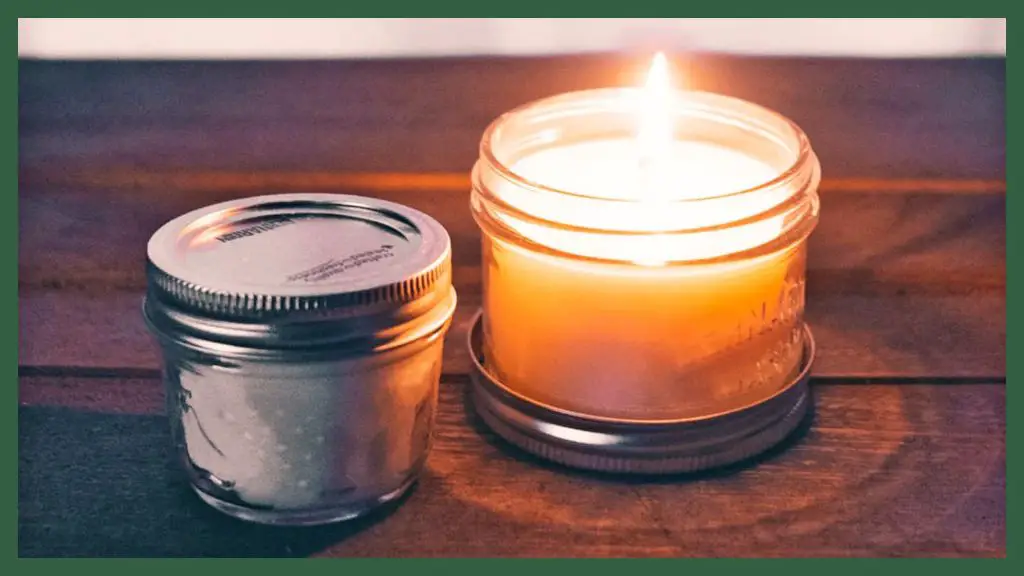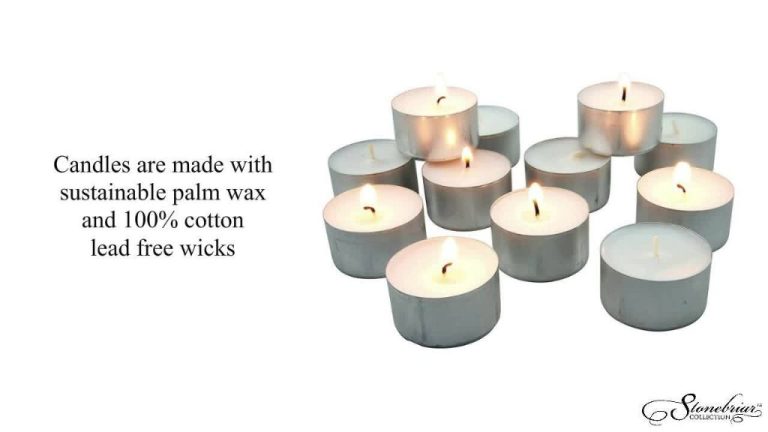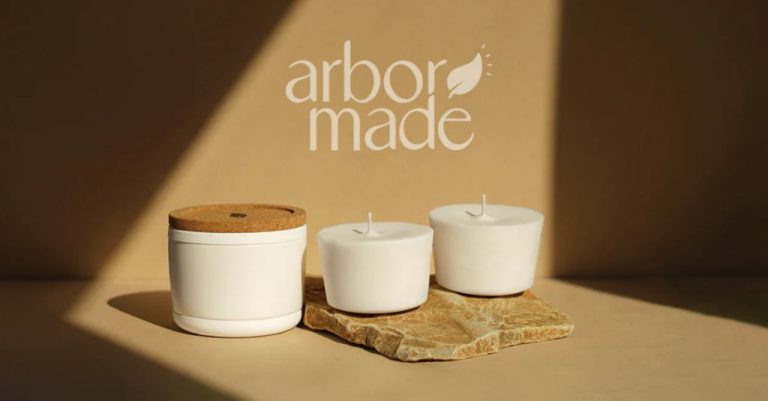What Is The Best Homemade Wick?
Intro
A candle wick is a specially designed string that is inserted into candle wax to deliver fuel to the flame as the candle burns. Wicks are essential components of candles, as they absorb liquefied wax through capillary action and draw it up into the flame. This allows for controlled, even burning of the wax. Wicks come in different materials, shapes and sizes depending on the type of candle being made.
When making candles at home, people often look for inexpensive and readily available materials to use as makeshift wicks. Some of the most common homemade candle wick materials include cotton, paper, wood, yarn, and wax-coated fabrics. The key factors to consider when selecting a homemade wick are flammability, stiffness, absorbency, and odor. The thickness of the wick also needs to match the diameter of the candle being made. This section will introduce the most popular options for homemade candle wicks and discuss their advantages and disadvantages.
Cotton Wicks
Cotton is one of the most common materials used for homemade candle wicks. Cotton wicks are made from natural fibers spun into threads or braided strands. Some key properties of cotton wicks include:
Cotton burns slowly and evenly, which helps prevent tunneling in candles. The natural fibers produce minimal soot, providing a clean burn (Amazon). However, cotton can get smoky if the wick is too large for the candle diameter or if oils pool around the wick (Amazon).
Cotton wicks are affordable and widely available. Braided cotton wicks are soft and flexible, making them easy to work with (Etsy). Cotton also absorbs wax well, helping draw fuel up to the flame.
On the downside, cotton wicks can bend over time and develop a “mushroom cap” as the wick burns down. Proper wick trimming helps prevent this. Cotton may also need to be stiffened or stabilized with wax since the fibers can separate (Amazon).
For best results, choose the proper cotton wick thickness for the candle diameter. Pre-waxed and tabbed cotton wicks allow for easier wick centering. Allow adequate cure time for the candle wax to fully saturate the cotton fibers before burning (Amazon). With the right wick and regular trimming, cotton makes an excellent choice for safe, clean-burning homemade candles.
Paper Wicks
Paper wicks are a classic wick material commonly used in candles. Paper wicks are made from thin sheets of paper that are tightly rolled or braided together to form a wick (M. Brown, 2022). Some key properties of paper wicks include:
- Absorbent – paper wicks soak up melted wax well.
- Affordable – paper wicks are an inexpensive wick option.
- Customizable – paper wicks can be rolled to various thicknesses.
- Familiar material – paper is a recognizable and accessible material.
Some benefits of using paper wicks are that they are easy to make at home, burn relatively cleanly, and impart little scent or taste. Handrolled paper wicks give a classic, nostalgic candle look. On the downside, paper wicks may require more maintenance like frequent trimming (Luxury soy candles with simple ingredients. Soft and subtle scents using only 3 ingredients, 2022).
For best results with paper wicks, braid or twist strands tightly and evenly. Choose a thicker wick for wider candles or harder wax blends. Trim wicks to 1⁄4” before lighting to prevent mushrooming. Avoid paper wicks with dyes or inks which can alter scent. With proper wick size and maintenance, paper wicks can provide a timeless candle experience.
Wooden Wicks
Wooden wicks are made from natural wood fibers that are coated in wax. Some key properties of wooden wicks include:
- They have a flat, wide shape that maximizes surface area for the flame.
- The wood material burns slowly and evenly.
- As they burn, wooden wicks make a light cracking or popping sound.
- They are reusable and can be trimmed to adjust the flame height.
Wooden wicks have some benefits compared to traditional cotton wicks:
- They produce less soot and smoke, resulting in less residue on jars and cleaner air.
- The flame burns brighter, steadier and more visibly.
- The wood scent can complement natural, earthy candle fragrances.
Potential downsides of wooden wicks include:
- Higher cost compared to basic cotton wicks.
- Not compatible with all candle wax types.
- May need to trim more frequently than cotton.
- The popping sound may be too loud for some.
When using wooden wicks, it’s important to use wax with a melt point over 130°F and to avoid drafts which may cause the flame to smoke. Trimming the wick to 1⁄4 inch before lighting will produce the best flame. Refer to manufacturer guidelines for best practices (https://www.candle-lite.com/collections/wooden-wick-candles).
Yarn Wicks
Yarn makes an excellent wick material for homemade candles. Yarn wicks are soft and flexible, yet sturdy enough to stand upright in candle wax. The fibers of yarn make it great at absorbing wax and fueling the flame. There are a few considerations when selecting and using yarn for candle wicks:
Properties: Look for tightly twisted yarn made from natural fibers like cotton, hemp, or beeswax. These fibers maximize wax absorption while reducing soot. Avoid synthetic fibers which can create more smoke. Thicker yarns around size 4 or 6 work well for container candles.
Pros: Yarn is inexpensive and available at most craft stores. It’s a versatile material that comes in many sizes and fibers. Yarn wicks are soft and flexible, easing wick trimming. The twisted fibers maximize surface area for excellent wax absorption.
Cons: Some synthetic yarn can create more soot or smoke compared to natural fibers. Thinner yarns may not be rigid enough for freestanding pillars. They can bend over with the weight of wax. Proper wick sizing is important.
Best Practices: Look for high-quality, tightly twisted yarn in natural fibers like cotton. Beeswax-coated yarn is ideal to reduce soot. Match the yarn thickness to the candle diameter. THicker yarns work better in wider containers. Make sure the wick is centered and straight before pouring wax.
Wax-Coated Wicks
Wax-coated wicks, as the name implies, have an outer wax coating that helps the wick burn slowly and evenly (1). The wax coating controls the burn rate and prevents the wick from flaring up into large flames. Some key properties and benefits of wax-coated wicks include:

- The wax coating provides a slower, cooler burn compared to regular cotton wicks (2). This helps prevent soot, allows for a longer burn time, and reduces dripping.
- They are rigid enough to stand upright in candle containers without curling over (3). The coating adds stiffness.
- Wax-coated wicks self-trim due to the outer wax layer burning off as the candle burns down (2). This eliminates the need to periodically trim the wick.
- They are often pre-tabbed with a small wax chip that anchors them in place while pouring wax (3). This makes candle making easier.
The main downside is that wax-coated wicks can be more expensive than regular wicks. However, the benefits often make the extra cost worthwhile for candle makers. It’s best to use wax-coated wicks in container candles, especially those with a wide diameter. The outer wax coating helps sustain an even burn. Wax-coated wicks are available in various sizes to match different candle diameters (2).
(1) https://www.etsy.com/market/wax_coated_wicks
(2) https://www.judaica.com/wax-coated-wicks-18665.html
(3) https://www.amazon.com/Metal-Wick-Holder-Set-Tzinores/dp/B07JB9PCXF
Wick Sizing
Proper wick sizing is crucial for getting the best burn performance from your candle. The wick must be wide enough to provide an adequate fuel supply to the flame, but not so wide that it drowns the wick in melting wax and produces smoke and soot.
As a general guideline, thinner candles like votives and pillars require smaller wicks like CD 5’s and CD 7’s. Wider container candles can use larger wicks like CD 10’s and CD 12’s. Tea lights usually use very thin CD 1 or CD 2 wicks.
When choosing a wick, consider the diameter of the candle container or pillar. Refer to a wick sizing chart like the one provided by Bramble Berry to match your candle diameter to the right wick size (see https://www.brambleberry.com/how-to/candles/Art0249-candle-wick-guide.html).
Also factor in the type of wax used. Natural waxes like soy wax require larger wicks than paraffin wax since they have a lower melt point. Essential oils and fragrance oils can also impact burn performance.
Testing different wick sizes with small test candles is recommended to dial in the best wick for your particular candle design.
Wick Trimming
Proper wick trimming is essential for candle safety and performance. According to Yankee Candle, “too large a flame can cause ‘tunneling’ – a hole burned into the wax”. Trimming helps maintain an ideal flame height of 1/4″ to 1/2″.
Some best practices for wick trimming include:
- Trim the wick to 1/4″ before lighting for the first time.
- Trim the wick before each use to remove any mushrooming and maintain the proper flame height.
- Trim the wick only after it has completely cooled – never trim a burning wick.
- Use sharp wick trimmers, scissors, or nail clippers specifically designed for candle wicks.
- Trim just above the melted wax pool – about 1/8″ to 1/4″.
- Avoid leaving black smoke marks on the glass or container.
Properly trimming the wick helps candles burn cleanly and evenly down to the bottom. Always remember to blow out candles before leaving them unattended.
Safety
When burning candles, it’s important to be aware of potential safety hazards. According to Beeswax Candle Wick, Safety Wick, 200 Feet for DIY …, using the proper wick is crucial for fire safety. The wrong size or type of wick can cause the flame to be too large, increasing the risk of catching nearby objects on fire. It’s best to use a braided or flat wick, which curl over as they burn to maintain a smaller, cooler flame. Avoid using metal-core wicks, which sustain a taller flame.
Proper wick trimming also promotes fire safety, as trimmed wicks lead to smaller flames. Trim wicks to 1⁄4 inch before lighting to reduce excess smoke and soot. According to US7293984B2 – Self extinguishing safety candle wicks and …, self-extinguishing wicks are a safer option, as they are designed to stop burning when the candle burns down. This prevents potential fires from tipped over or forgotten candles. Place candles on a heat-safe surface away from flammable materials.
Candle smoke contains fine particles that can worsen indoor air quality and aggravate respiratory issues. Be sure to ventilate rooms when burning candles. According to Beeswax Candle Wick, Safety Wick, 200 Feet for DIY …, lead-core wicks also pose a health risk, as lead vaporizes at high temperatures into surrounding air. Opt for lead-free wicks made of safer materials like cotton, wood, or zinc.
Conclusion
In summary, there are many options for creating homemade wicks, and the best material to use depends on your personal candle making preferences and needs. Cotton wicks are a classic choice that are widely available and work well for most basic candles. Paper wicks can create visually interesting effects as they burn but may require more frequent trimming. Wooden wicks produce pleasant cracking sounds and can give off a woodsy aroma. Yarn wicks come in a variety of thicknesses and materials. Wax-coated wicks are simple to make at home. The thickness of the wick is also an important factor, as a wick that is too thin can drown and one that is too thick can create excess smoke.
For most candle makers, cotton wicks are likely the best overall homemade wick option. Cotton wicks are affordable, accessible, easy to use, and suitable for many different types of candles. Focus on selecting the appropriate cotton wick thickness for your candle diameter and adjusting wick height through trimming for optimal performance. With the right wick maintenance and safety precautions, cotton wicks can help candle makers successfully craft quality homemade candles.





